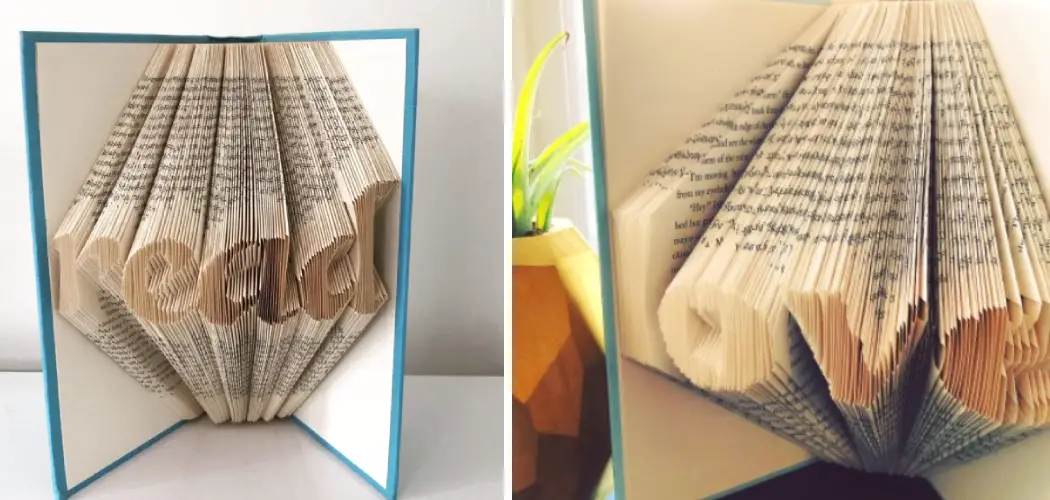Unlocking the captivating art of book folding patterns offers a unique and creative way to transform ordinary novels into mesmerizing pieces of art. This innovative craft combines the worlds of literature and design, allowing you to breathe new life into old books while showcasing intricate designs that can range from simple shapes to complex images.
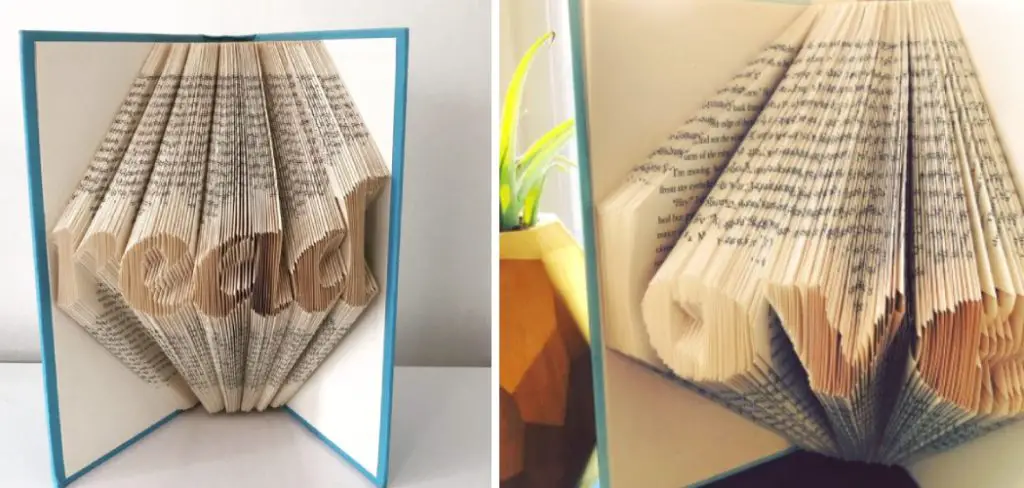
Crafting these patterns might appear daunting at first glance, but with the right guidance, you’ll discover an enjoyable and rewarding endeavor that lets your imagination run wild. By carefully folding the pages of a book, you can create visually stunning patterns that make for exquisite decorative items or thoughtful handmade gifts.
Whether you’re a seasoned DIY enthusiast or a newcomer to the world of crafts, learning how to make book folding patterns promises a satisfying outlet for your artistic expression and a newfound appreciation for the synergy between literature and design. In this guide, we’ll delve into the fundamental steps, techniques, and tips that will set you on the path to mastering the art of book folding.
What Book Folding Patterns Are
Book folding patterns are a craft that involves folding pages of books to create patterns. The resulting patterned books have stunning visual effects and can be used as decorative art pieces. To make these beautiful works of art, all you need is some paper, a ruler, scissors or a craft knife, and the desire to create something beautiful!
The process of creating book folding patterns is very simple and straightforward. All you need to do is choose a book, mark out the paper folds on the pages of the book using a ruler, then cut out each fold. Once you’ve done this, you can begin arranging your pieces to form the desired pattern. Depending on how intricate or simple you want your design to be, you can add or remove pieces as you go along.
It’s important to remember that when creating book folding patterns, the size of each piece matters. The number and size of your pieces will determine how intricate your pattern is, so it’s important to plan ahead. If you want a more complex design, make sure the cuts are small enough to create detailed designs.
Once you’ve finished creating your pattern, you’ll need to glue the pieces together to create a secure and sturdy book. You can use any type of glue for this process, but make sure it is strong enough to hold everything in place. Once the glue is dry, your book folding pattern is complete and ready for display!
Popular Uses and Applications of Book Folding Art

Book folding art can be used for a plethora of creative projects. Whether you are looking to add a unique and personal touch to gifts, craft furniture, or decorate your home with style, book folding is an excellent way to show off your creativity. It can be used as a way to turn ordinary items into something special, such as creating decorative boxes out of old books, or turning a unique book into a customized lampshade.
With the right tools and supplies, you can create intricate patterns like those seen in traditional paper folding techniques, such as origami. Book folding gives you more room to be creative with your designs, allowing for larger and more complex projects than would be possible with basic paper folding. You can combine various techniques, such as folding and cutting, to create intricate patterns.
Book folding can also be used in the classroom. Teachers can assign students projects that involve creating patterns with books and teach them about math concepts such as geometry or symmetry. Students will learn how to measure and calculate angles while developing their creative skills at the same time.
By learning how to make book folding patterns, you can transform a dull book into an eye-catching piece of art. You will be able to add a personal touch to your gifts and become a master of paper folding techniques. Whether you are looking for ways to decorate your home or teach math in the classroom, book folding is a great project to tackle. Give it a try today!
10 Methods How to Make Book Folding Patterns
Method 1: Selecting the Ideal Book
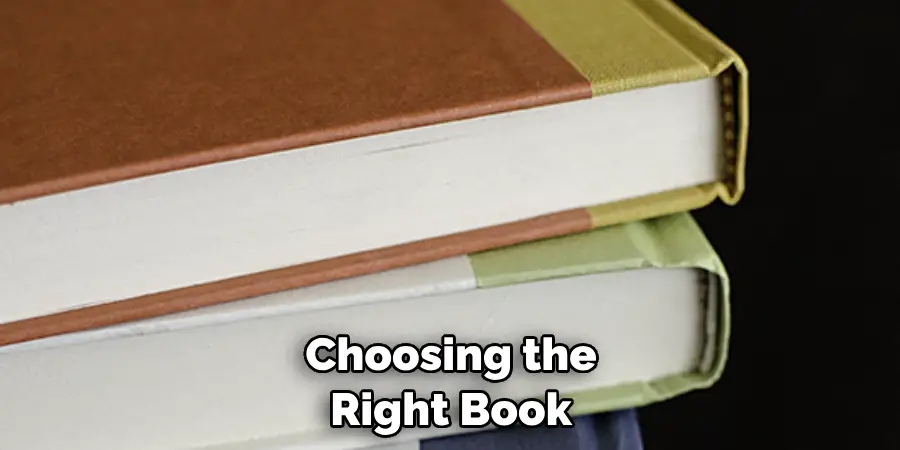
The journey of crafting book folding patterns commences with choosing the right book as your canvas. Opt for a hardcover book with a strong spine, as this provides the necessary stability for the folding process.
The size, thickness, and quality of the pages are also important factors to consider, as they dictate the complexity and final aesthetic of your design. Your chosen book’s theme or content can even influence the overall tone of your finished creation.
Method 2: Assemble Your Toolkit
To embark on your book folding venture, gather essential tools that facilitate precision and finesse. A ruler serves as your guiding instrument for accurate measurements, while a pencil allows you to lightly mark your fold lines.
A bone folder, with its smooth, blunt edge, is indispensable for achieving crisp and defined folds. Additionally, ensure you have access to a well-lit workspace to enhance your visibility and precision during the crafting process.
Method 3: Grasping Basic Folds
Before embarking on intricate designs, acquaint yourself with the foundational folding techniques. Master the art of valley folds, where the paper is folded towards you, and mountain folds, where it’s folded away from you. These fundamental folds set the groundwork for more complex patterns by providing a grasp of the mechanics involved in manipulating the book’s pages.
Method 4: Crafting or Sourcing Templates
For those with artistic inclinations, designing your templates allows for boundless creativity. However, numerous online resources offer an array of pre-designed templates catering to different tastes and levels of expertise.
These templates serve as blueprints, guiding your folds and helping you bring your envisioned design to life. You can also transform images into custom templates using graphic design software.
Method 5: Precise Page Marking
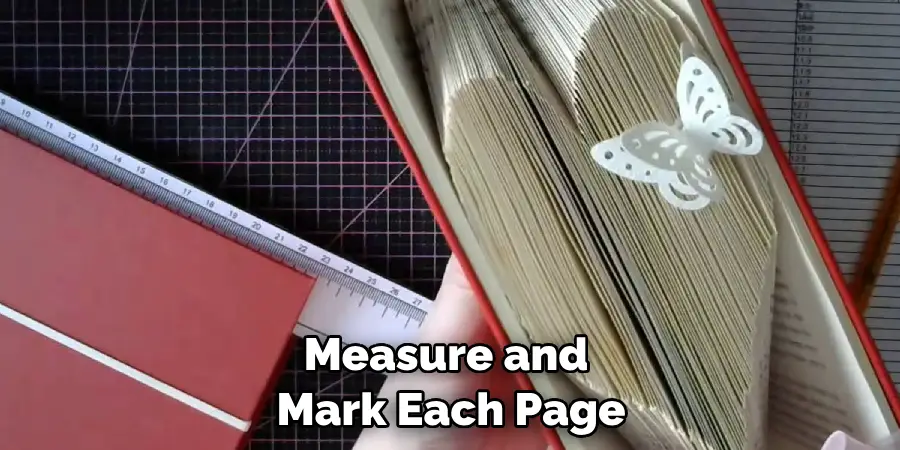
Accurate measurements and markings are pivotal in achieving a flawless book folding pattern. With the guidance of your ruler, measure and mark each page according to the template. Precision at this stage ensures the alignment of the folds, leading to an immaculate final product.
Method 6: Commencing with Simplicity
If you’re a beginner, it’s advisable to commence with designs that are relatively simple, involving fewer intricate folds. This approach allows you to acclimate to the process, understand the rhythm of folding, and build your confidence. Gradually progressing to more intricate patterns as your proficiency improves is an effective way to ensure success and minimize frustration.
Method 7: Incorporating Depth with Folds
Elevate your book folding patterns by incorporating depth and dimension. Techniques like “cut and fold” involve selectively cutting and folding parts of the pages to create layered and multidimensional designs. This introduces a captivating visual aspect that adds complexity and intrigue to your creations.
Method 8: Balancing Symmetry and Asymmetry
In the realm of design, the balance between symmetry and asymmetry is a fascinating dichotomy to explore. Symmetrical patterns provide a sense of equilibrium and harmony, while asymmetry introduces a dynamic and visually engaging element. Experimenting with both styles allows you to develop a unique artistic signature and play with the viewer’s perception.
Method 9: Harnessing Negative Space
The interplay between positive space (the folded parts) and negative space (the untouched areas) is a fundamental aspect of book folding patterns. Embrace the uninhabited spaces to create contrast, emphasize your design’s focal points, and guide the viewer’s gaze through the intricacies of your artwork. This deliberate interplay contributes to the overall visual impact of the piece.
Method 10: Infusing Personal Flourishes
Transform your book folding creations into personalized masterpieces by adding unique embellishments. Incorporate hand-painted elements, decorative ornaments, or even LED lights to accentuate specific sections of your design. These bespoke touches elevate your work, infusing it with individuality and a touch of your personality.
Things to Consider When Making Book Folding Patterns
When it comes to making book folding patterns, there are a few important things you need to keep in mind. First, consider the type of design you want your pattern to have. Simple geometric shapes like squares and triangles may be easier for beginners, while more complex designs can create interesting effects.
You will also need to decide how detailed your pattern will be. If you want to create a complex design, such as a flower or animal shape, the more detailed the better. This means that you may need to adjust the folds and measurements accordingly.
Finally, consider how much space your folding pattern should take up on the page. This will depend on the size of your book and page layout – if you want a large pattern, make sure to account for that in your measurements.
Once you’ve considered all these points, the next step is to begin drawing and folding your design. You can use special paper tools such as rulers and protractors to help with measuring and creating precise shapes. As you work, keep in mind that contrast matters – different colors can make your pattern look more interesting and eye-catching.
Book folding patterns are an excellent way to add a touch of creativity to any book. With the right techniques and materials, you can create beautiful designs that will bring your books to life. So, once you’ve figured out how to make book folding patterns, get creative and start designing!
Some Common Mistakes When Making Book Folding Patterns
Book folding patterns can be a great way to add a personal touch to any book, but if you’re just starting out there are some common mistakes you should avoid.
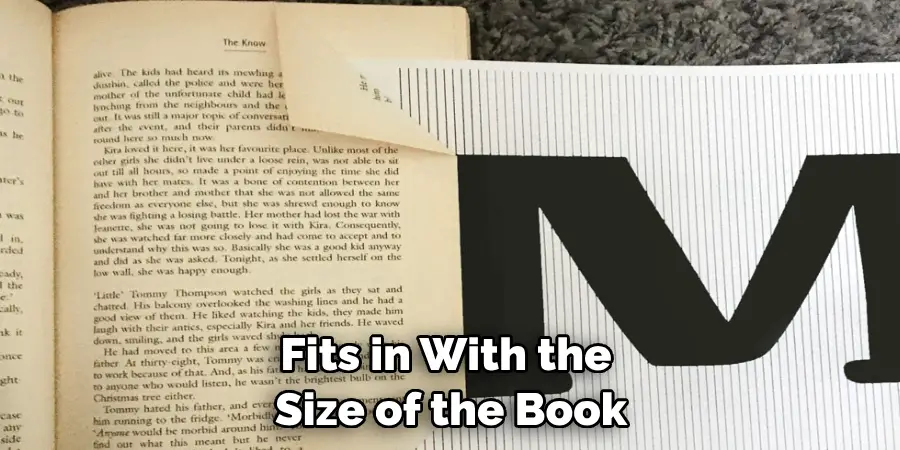
One of the most important rules is to make sure that the pattern you choose fits in with the size of the book. If it’s too small or too large it can look awkward and detract from the overall effect.
Another mistake is to simply fold a pattern without considering how it would actually look when finished. Taking your time to consider each element of the pattern will ensure that you get the best possible result.
Finally, be sure to use the right paper for your design. Some papers may not hold up well to folding, so make sure you use something that will stand up to the process.
By following these tips, you can create a beautiful book folding pattern that will be a unique addition to any book. With a little practice and patience, you’ll soon become an expert at making book folding patterns of your own!
One other tip is to look for tutorials online to get some inspiration or guidance on how to construct your own patterns. There are many resources available, from beginner level through to more advanced techniques so you can find something that works for you and your project.
With a bit of practice, you’ll be creating stunning book folding patterns in no time! Now all you need is a book to show it off!
Conclusion
Now that you’ve learned how to make book folding patterns, it’s time for you to start creating your own masterpieces! Book folding is a truly rewarding experience – not only do you get to express yourself creatively, but also learn new habits that boost your productivity. Your work will be unique and one-of-a-kind. Don’t be afraid to experiment – combine different techniques like using measuring tape or a ruler and use bold colors.
With enough practice and dedication, you can create beautiful book folding art pieces that will surely turn heads around the house. Plus, the entire process is enjoyable – it will help you relax after a long day and provide moments of gratification when completed successfully. Who knows, maybe one day you’ll even master this technique so well that others may try to replicate your methods!

